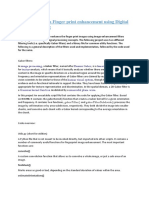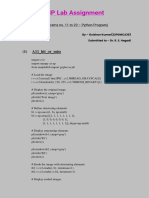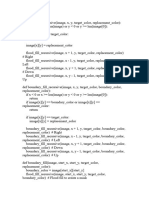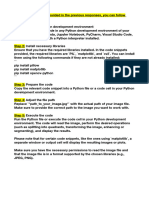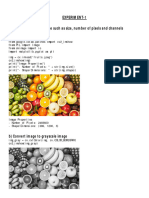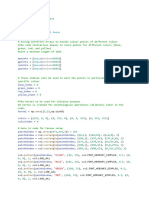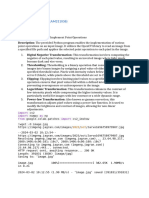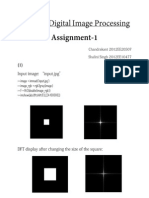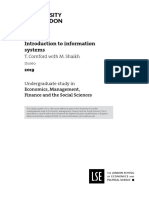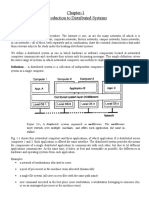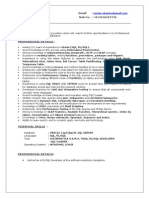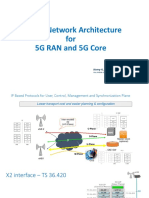0% found this document useful (0 votes)
19 views14 pagesD) Le Partie 2 of Script
The document outlines a comprehensive project for removing text from manga and comic images using advanced inpainting techniques. It details various methods for inpainting, including Stable Diffusion and OpenCV, and describes the process of detecting text, creating masks, and post-processing results. The implementation includes error handling and options for customizing detection confidence and inpainting methods.
Uploaded by
bobsviking22Copyright
© © All Rights Reserved
We take content rights seriously. If you suspect this is your content, claim it here.
Available Formats
Download as TXT, PDF, TXT or read online on Scribd
0% found this document useful (0 votes)
19 views14 pagesD) Le Partie 2 of Script
The document outlines a comprehensive project for removing text from manga and comic images using advanced inpainting techniques. It details various methods for inpainting, including Stable Diffusion and OpenCV, and describes the process of detecting text, creating masks, and post-processing results. The implementation includes error handling and options for customizing detection confidence and inpainting methods.
Uploaded by
bobsviking22Copyright
© © All Rights Reserved
We take content rights seriously. If you suspect this is your content, claim it here.
Available Formats
Download as TXT, PDF, TXT or read online on Scribd
/ 14








